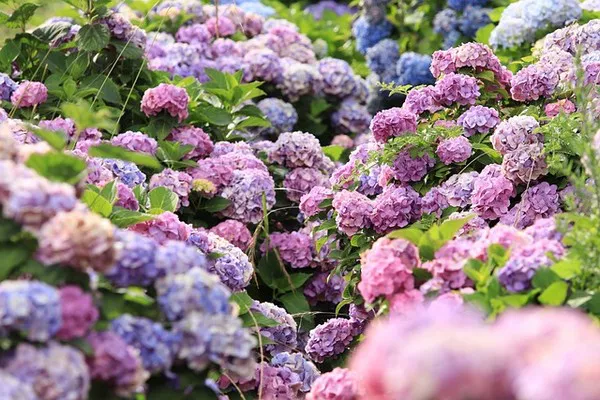Hydrangeas, with their lush, voluminous blooms in an array of captivating colors, are a beloved addition to any garden or floral arrangement. These flowering shrubs are renowned for their ability to thrive in various climates and soil conditions, making them a popular choice among gardeners and florists alike. However, once cut, hydrangea blooms have a limited lifespan, often wilting within a few days if not properly preserved. Understanding the factors affecting the preservation of hydrangeas and employing effective preservation methods are crucial for extending the longevity of these exquisite flowers.
Factors Affecting Preservation
Several factors influence the preservation of hydrangea flowers, ranging from environmental conditions to harvesting techniques. Understanding these factors is essential for implementing effective preservation strategies.
1. Environmental Conditions: The environment in which hydrangeas are grown and stored significantly impacts their preservation. Exposure to extreme temperatures, direct sunlight, and dry air can expedite wilting and decay. Additionally, fluctuations in humidity levels can affect the moisture content of the blooms, leading to premature drying.
2. Harvesting Time: The timing of hydrangea harvest plays a vital role in their preservation. Flowers should be cut when they are at their peak bloom, typically in the morning or late afternoon. Harvesting blooms too early or too late in their growth cycle can result in flowers that are prone to wilting and discoloration.
3. Water Quality: Hydrangeas are highly sensitive to the quality of the water they absorb. Using clean, room temperature water is essential for preventing bacterial growth and maintaining hydration. Additionally, adding floral preservatives to the water can extend the lifespan of hydrangea blooms by providing essential nutrients and inhibiting microbial growth.
4. Handling and Transportation: Proper handling and transportation are crucial for minimizing damage to hydrangea blooms. Rough handling, excessive bending, or exposure to crushing pressure can cause bruising and petal damage, accelerating wilting and decay. Care should be taken to support the stems and protect the delicate blooms during handling and transit.
Methods of Preserving Hydrangea Flowers
Several methods can be employed to preserve hydrangea flowers and extend their beauty and freshness:
1. Water Immersion Method: This method involves submerging the freshly cut hydrangea stems in a bucket or vase filled with room temperature water immediately after harvesting. Remove any foliage that will be submerged to prevent bacterial growth. Place the container in a cool, dark location away from direct sunlight and heat sources. Change the water every two days and recut the stems at an angle to facilitate water absorption.
2. Drying: Drying hydrangea blooms allows them to retain their shape and color for an extended period, making them ideal for long-term floral arrangements and crafts. Hang hydrangea stems upside down in a dry, well-ventilated area away from direct sunlight. Allow the flowers to air dry for several weeks until they feel papery to the touch. Once dried, hydrangeas can be arranged in bouquets or used in wreaths and other decorative arrangements.
3. Glycerin Preservation: Glycerin preservation is a popular method for preserving hydrangea blooms while maintaining their natural appearance and texture. Mix one part glycerin with two parts water and immerse the hydrangea stems in the solution. Allow the flowers to absorb the glycerin mixture for one to two weeks, or until they become saturated and pliable. Glycerin-preserved hydrangeas retain their color and suppleness, making them suitable for various floral designs and displays.
4. Silica Gel Drying: Silica gel is a desiccant that absorbs moisture from flowers, preserving their shape and color. Place hydrangea blooms in a container filled with silica gel, ensuring that the flowers are completely covered. Seal the container and allow the flowers to dry for several days to a week, depending on their size and moisture content. Once dried, carefully remove the hydrangea blooms from the silica gel and gently brush off any excess powder.
Tips for Preserving Hydrangea Flowers
Choose the Right Blooms: Select hydrangea blooms that are fully open but not overly mature or beginning to wilt. Flowers with vibrant colors and firm petals are ideal for preservation.
1. Hydration is Key: Hydrangeas are particularly thirsty flowers and require ample hydration to remain fresh. Ensure that the stems are submerged in water immediately after cutting and replenish the water regularly to prevent dehydration.
2. Avoid Direct Sunlight and Heat: Exposure to direct sunlight and heat can accelerate the wilting process and cause the colors of hydrangea blooms to fade. Keep arrangements in a cool, shaded area to prolong their freshness.
3. Prune Wisely: Regular pruning promotes healthy growth and blooming in hydrangea plants. Remove any dead or wilted blooms promptly to encourage the production of new flowers and prevent the spread of disease.
4. Monitor Humidity Levels: Hydrangeas thrive in moderate humidity levels and may wilt quickly in dry environments. Use a humidifier or place a shallow tray filled with water near arrangements to maintain optimal humidity levels.
5. Refresh Arrangements Regularly: Trim the stems and change the water in hydrangea arrangements every few days to prevent bacterial growth and maintain hydration. Remove any wilted or discolored blooms to preserve the overall appearance of the arrangement.
Conclusion
By understanding the factors influencing hydrangea preservation and implementing effective preservation methods and tips, it is possible to extend the beauty and freshness of these exquisite flowers, allowing them to be enjoyed for longer periods in floral arrangements, bouquets, and decorative displays. With proper care and attention, hydrangeas can continue to delight and enchant admirers with their captivating blooms long after they are cut.


